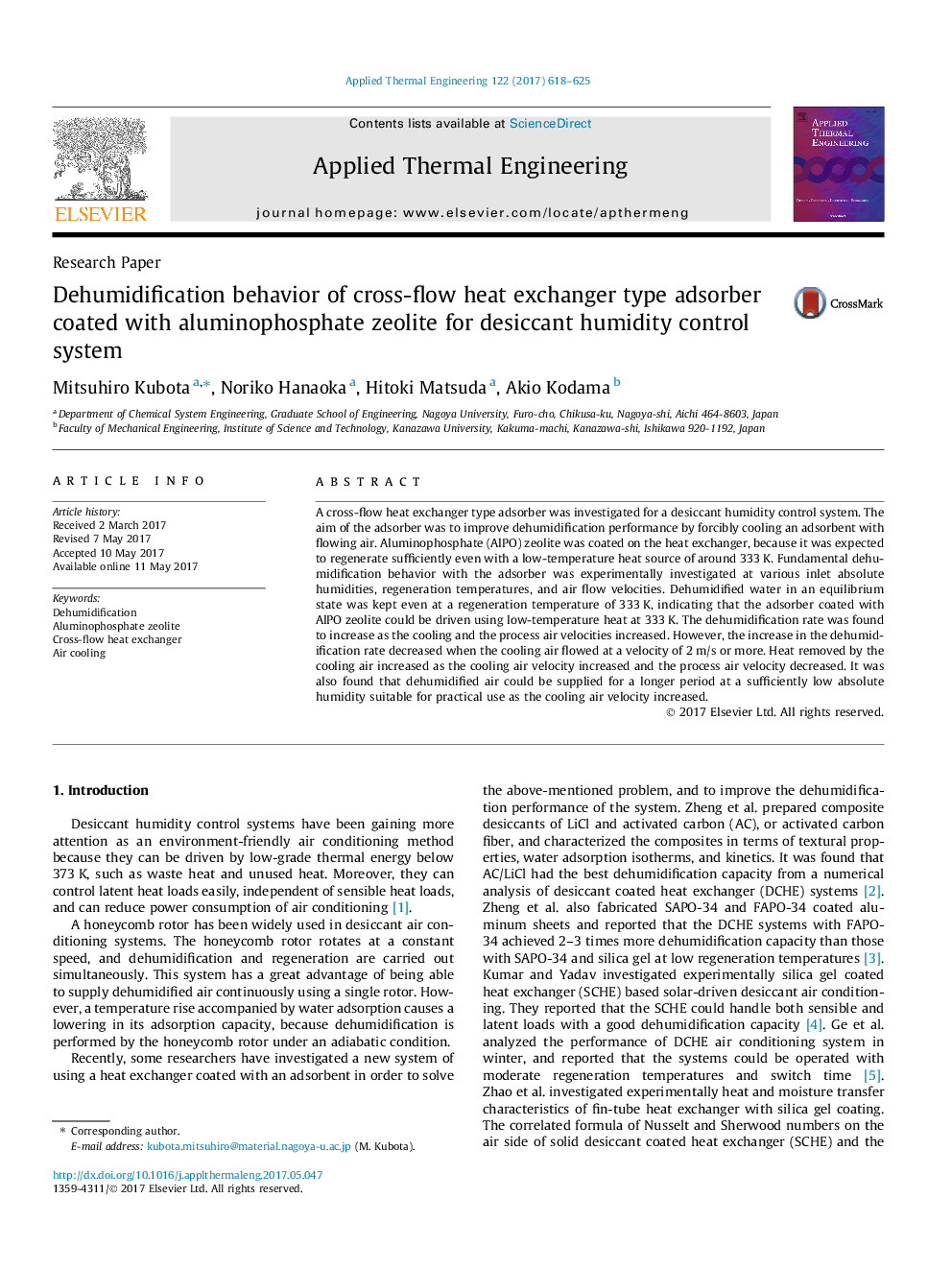| Article ID | Journal | Published Year | Pages | File Type |
|---|---|---|---|---|
| 4990953 | Applied Thermal Engineering | 2017 | 8 Pages |
A cross-flow heat exchanger type adsorber was investigated for a desiccant humidity control system. The aim of the adsorber was to improve dehumidification performance by forcibly cooling an adsorbent with flowing air. Aluminophosphate (AlPO) zeolite was coated on the heat exchanger, because it was expected to regenerate sufficiently even with a low-temperature heat source of around 333Â K. Fundamental dehumidification behavior with the adsorber was experimentally investigated at various inlet absolute humidities, regeneration temperatures, and air flow velocities. Dehumidified water in an equilibrium state was kept even at a regeneration temperature of 333Â K, indicating that the adsorber coated with AlPO zeolite could be driven using low-temperature heat at 333Â K. The dehumidification rate was found to increase as the cooling and the process air velocities increased. However, the increase in the dehumidification rate decreased when the cooling air flowed at a velocity of 2Â m/s or more. Heat removed by the cooling air increased as the cooling air velocity increased and the process air velocity decreased. It was also found that dehumidified air could be supplied for a longer period at a sufficiently low absolute humidity suitable for practical use as the cooling air velocity increased.
